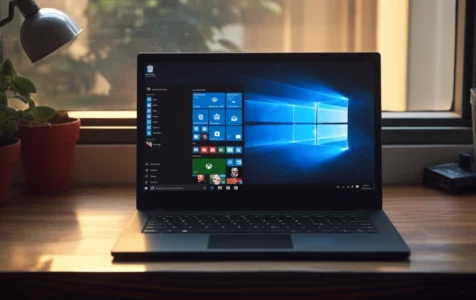This guide provides straightforward instructions for locating the Media Access Control (MAC) address on your Windows 10 device. The MAC address is a unique identifier tied to a device’s Network Interface Controller (NIC), fundamental to network communications, network permissions setup, and device identification within local networks. You will find detailed steps to uncover your MAC address using four methods: Command Prompt, the Network and Sharing Center, the System Information app, and PowerShell, along with troubleshooting advice and answers to common queries.
What Is a MAC Address
Think of a MAC address as a unique nametag for every device that connects to a network. Tied to NIC, it’s pivotal for the internet protocol suite. Regardless of your device – a computer, phone, or even a smart fridge, a MAC address is essential.
Locating Your MAC Address on Windows 10
You can discover your MAC address using four straightforward methods on Windows 10: Command Prompt, the Network and Sharing Center, the System Information app, and PowerShell.
Method 1: Command Prompt
Command Prompt, a built-in Windows utility, is an easy way to locate your MAC address.
Expert Tip: For smoother PC performance, consider using a PC optimization tool. It handles junk files, incorrect settings, and harmful apps. Make sure it's right for your system, and always check the EULA and Privacy Policy.
Special offer. About Outbyte, uninstall instructions, EULA, Privacy Policy.
- Enter “command prompt” in the search bar next to the Windows icon.
- Type “ipconfig /all” in the resulting dialogue box and press Enter.
- In the network configurations list, find your network adapter and locate the “Physical Address” line.
- The listed alphanumeric code is your MAC address.
Method 2: Network and Sharing Center
The Network and Sharing Center offers another route.
- Click the network icon at the bottom right of your screen.
- Select “Network & Internet settings” from the menu.
- Click on “Network and Sharing Center” at the next screen’s bottom.
- Click on your Connection, identified by your Wi-Fi network’s name.
- Click the “Details…” button in the Wi-Fi Status window.
- The “Physical Address” field contains your MAC address.
Method 3: System Information App
System Information, a Windows tool, can also find your MAC address.
- Open the System Information app.
- Navigate to the Network section within the list of components.
- Locate the “MAC Address” line within your network adapter information.
- The displayed alphanumeric code is your MAC address.
Method 4: PowerShell
PowerShell, another Windows utility, offers a quick way to locate your MAC address.
- Launch PowerShell.
- Enter the command “getmac” and press Enter.
- The displayed “Physical Address” is your MAC address.
Additional Notes
MAC addresses usually contain 12 alphanumeric characters, divided into six pairs by dashes (e.g., a1-b2-3c-4d-e5-6f). Each network adapter in your device will have its unique MAC address.
Troubleshooting
If you encounter issues finding your MAC address, check that you’re using the correct command and looking at the right network adapter, especially for devices with multiple adapters.
Conclusion
Following the methods outlined in this guide, you can successfully locate your MAC address in Windows 10. This practical skill is an essential part of managing network permissions and identifying devices on your local network. Further, in case of difficulties, remember to check that you’re using the correct commands and inspecting the appropriate network adapter, especially if your device has multiple adapters.
